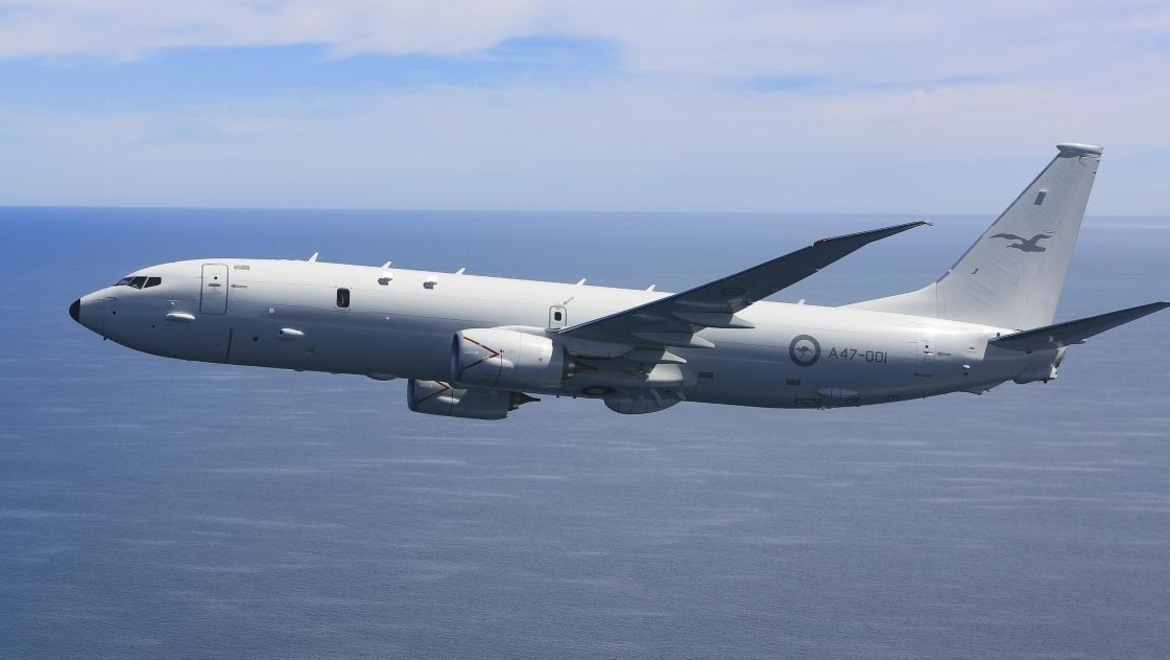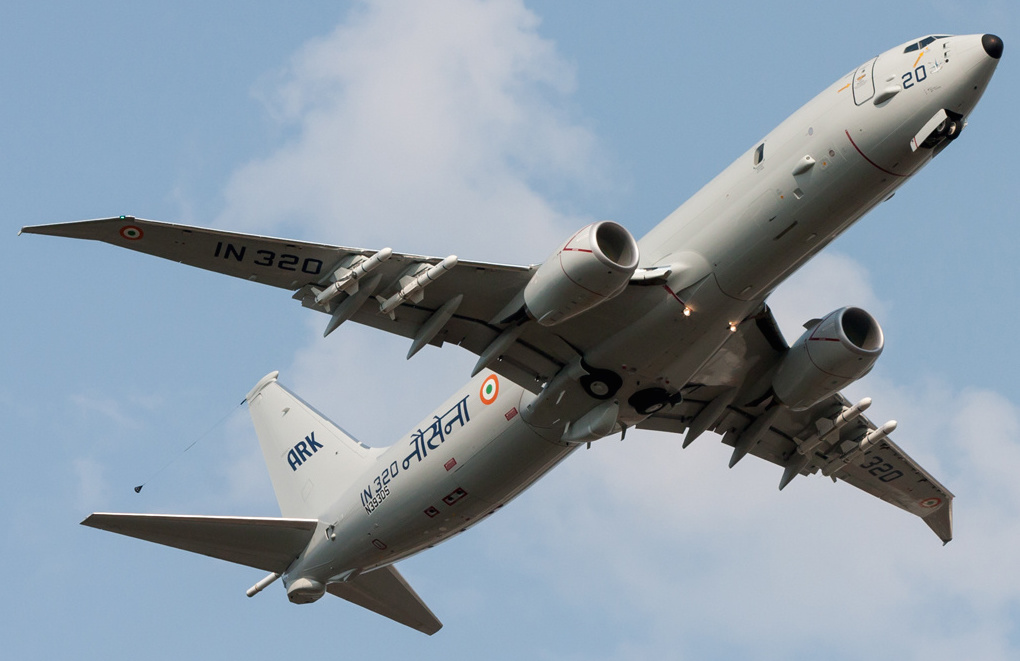With an eye on China, Australia, and India have been shoring up defense collaborations in the Indo-Pacific.
Advertisement
In the latest development, the P-8 maritime patrol aircraft of the Royal Australian Air Force (RAAF) has arrived in India and will be conducting drills for anti-submarine warfare and joint patrolling with its Indian counterpart P-8Is in the Eastern Indian Ocean.
The multi-mission aircraft is designed for long-range anti-submarine warfare, anti-surface warfare, intelligence, surveillance, and reconnaissance (ISR) missions.
The Indian Navy was the first country outside the US to get one of these Boeing-made aircraft in 2013. The first P-8I squadron at INS Rajali’ Albatross,’ which will host the Australian aircraft, has clocked 40,000 hours of operation.
“A Maritime Patrol and Reconnaissance Aircraft (MRPA- P8A) from Australia arrived at INS Rajali on June 30 for joint exercises with Indian Navy’s P-8I aircraft. The detachment provides an opportunity for enhancing interoperability and jointness through mission planning, crew interactions, and sharing of the best practices between the Indian Navy and Australian defense forces,” the Indian Navy said in a statement.
The two countries have been conducting coordinated exercises between their respective Maritime Patrol Aircraft in Australia and India. Last year, India sent its P-8I for its maiden deployment to Australia – outside of a routine military exercise.
Advertisement
This was followed by a reciprocal visit of the Australian Poseidon aircraft P-8I to Goa, the western seaboard of India. The sharing of information and expertise through coordinated operations is part of a tacit understanding between the countries seeking to counter China’s assertiveness in the Indo-Pacific Region.
“Both Poseidon are Boeing manufactured and have lots of commonalities. In addition to an intelligence-sharing agreement, it allows these two aircraft to exchange the positions of vessels in their own areas of operation and feed into a larger maritime domain awareness (MDA) network.
Because of interoperability, it becomes easier to do reconnaissance in a much larger area, even without each aircraft having to operate in two different areas. It gives the force commanders a much larger picture in the MDA,” Vice Admiral Shekhar Sinha told the EurAsian Times. He is a retired naval aviator.
Experts say that the presence of Chinese submarines in the Indian Ocean Region (IOR) is a main concern for India, and it offers potential cooperation between India and Australia in underwater domain awareness.
Commander Abhijit Singh, a retired Navy officer, opined in an article recently: “If Australia were to deploy its P-8A maritime surveillance aircraft in coordination with Indian P-8Is, the Indian Navy would have a keener sense of underwater threats in the Indian Ocean. India’s Andaman and Nicobar Islands and Australia’s bases at Darwin and Fremantle need to be better utilized for that purpose.”

In an article recently, Commander Abhijit Singh, a retired Navy officer, opined: “If Australia were to deploy its P-8A maritime surveillance aircraft in coordination with Indian P-8Is, the Indian Navy would have a keener sense of underwater threats in the Indian Ocean. India’s Andaman and Nicobar Islands and Australia’s bases at Darwin and Fremantle must be better utilized for that purpose.”
Andaman and Nicobar Islands are located at the mouth of strategic Malacca Strait, which gives access to the South China Sea and is an important international shipping lane. It is considered to be one of the choke points for China.
Advertisement
The islands, along with the Australian bases at Darwin and Fremantle, help both countries in surveillance operations over the eastern Indian Ocean better. Darwin is close to some of the choke points that Chinese Navy warships and submarines use to enter the Indian Ocean.
Australia is spending US$3.8 billion to modernize its northern bases as part of the new response to the threat posed by China. And experts suggest that the Indian P-8I can use the base for refueling as part of the logistics support agreement that is already in place between the two countries.
Commander Singh suggests, “With the (Australian Defense Strategic Review) DSR promising an upgrade in Cocos (Keeling) Island bases, where facilities are already being modernized, Indian P-8I operations could find an additional place of logistics support.
“It (P-8I) is a game changer since single aircraft operation will result in one specific area’s surveillance whereas two aircraft operating simultaneously will cover vast areas by way of exchanging information by a data link,” Vice Admiral Sinha added.
Vice Admiral Sinha adds that the development should not be seen only in the context of China.
“It should not be seen as balancing China. As you know, there are a number of Non-Traditional Threats in the Indo-Pacific, for example, piracy, human migration, Search and Rescue, Illegal Unreported & Unregulated fishing, Terrorism, sea pollution, accidents, narcotics trade, natural and man-made disasters, etc.”
He added: “In an area as vast as the Indo-Pacific, it is necessary to watch this area continuously in order to provide assistance or enforce some sense of lawful usage of the oceans. Therefore, Australia, India, Japan, and the US are engaged in near real-time reconnaissance in order to activate the agencies for remedial actions.”
The P-8 Posidon: Submarine Killer
The aircraft has been deployed by the Indian Navy extensively for maritime operations to safeguard national interests as the first responder in the IoR.
But in 2017 and 2020, the aircraft flew extensive sorties in India’s north and eastern sectors to keep an eye on Chinese troops and maneuvers. Its radar capabilities helped it create a real-time picture of the ground situation as it unfolded.

The Indian version of the Poseidon aircraft, called P-8Is, has indigenous communication and sensor suites developed by Indian PSUs and private manufacturers, making it different from the other aircraft operated by five other countries – the US, the UK, Australia, Norway, and New Zealand. Germany and South Korea have also placed orders for these multi-role aircraft.
The P-8I is the Indian variant of the P-8A featuring Data Link II communications from the Indian company Bharat Electronics Limited (BEL), allowing the P-8I to exchange tactical data between Indian Navy aircraft, ships, and shore establishments.
It also features an integrated BEL-developed Identification Friend and Foe (IFF) system. India has purchased AGM-84L Harpoon Block II anti-ship missiles and Mk 54 All-Up-Round Lightweight torpedoes for the P-8.
The aircraft is modified to include a bomb bay and pylons for weapons. It has two weapons stations on each wing and can carry 129 sonobuoys, which are released into the water to locate a submarine and can be retrieved by a warship. The aircraft is fitted with an in-flight refueling system.
The P8-I replaced the aging Soviet-vintage Tupolev Tu-142s in the Indian Navy. They can fly as high as 41,000 feet, and their high speed helps them reach the “area of probability” when searching for submarines and surface vessels faster.
Advertisement

The twin-engine aircraft can also fly at low altitudes to carry out humanitarian and search and rescue missions. It has a range of 2,222 km and is operated by a crew of nine. As per Boeing, the aircraft has completed 400,000 flight hours globally without mishaps.
The aircraft is equipped with advanced weapon systems that include anti-submarine torpedoes. It has a life of around 25 years, or 25,000 hours in the “harshest maritime flight regimes, including extended operations in icing environments,” Boeing says.
Twelve of these aircraft are already in service with the Indian Navy, with the latest one delivered in February this year. The Navy commissioned its second squadron of P-8I long-range maritime reconnaissance aircraft earlier this year.
The Indian Navy, reports say, plans to have a total of 22 of these aircraft in the next few years to keep an eye on Chinese movements in the Indian Ocean region, especially its submarines.